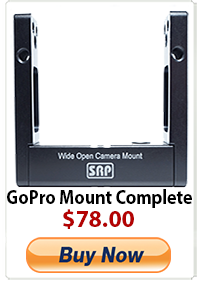How to use Adobe’s extra DSLR color info in Avid MC5/FCP
We’ve all heard Shane Hurlbut say how much better 5D color appears when edited in Adobe Premiere CS5. That’s great, but what does that mean for those of us who prefer editing in Avid Media Composer or Final Cut? For the past several months I’ve been having my DIT transcode media on set to Avid’s intermediate file type DNxHD 175x using Adobe Media Encoder CS5. Before I get too far I need to point out that DSLR media must be edited in a 10 bit format. A lot of intermediate file types (including ProRes and DNxHD) limit color level info to those between 16 and 235. That’s 220 possible color levels out of 256 max in 8 bit codecs. However our Canon DSLRs are recording in the full 0-255 8 bit color space. So say you decide to edit your footage in an 8 bit codec since it was shot in an 8 bit codec. No good. You’ve just limited the dynamic range to 220 levels meaning your DSLR footage is just that much harder to grade. Edit using your NLE’s favorite 10 bit codec so that the 256 possible color levels in your DSLR media will be expanded to fill the greater range of the intermediate codec.
It wasn’t until I got ahold of Technicolor’s Cinestyle that I started trying to see the difference between Adobe and Avid encoded media. Take a look at the clip below. What you see here is some media recorded between takes on a music video shoot with a Canon 7D using Technicolor’s CineStyle mounted to a Kessler crane with a VariZoom. One copy of the clip was transcoded to DNxHD 175x using Adobe Media Encoder CS5 and the other was brought in via AMA and then transcoded to 1:1MXF prior to export. Since Media Composer has no LUT support I had to manually recreate the S-curve file provided by Technicolor. I copied the Master Curves over to both the Adobe encoded file and the Avid encoded file. No further color correction was done. As you can see the Adobe encoded file has some extra latitude where as the shadow detail in the Avid file seems crushed. Take a look at the detail in the jeans and how the transition from Porsche to shadow is non-existent in the 1:1MXF. This happens regardless if I choose to online my footage at DNxHD175x or the 1:1 max resolution options. All media was encoded in the rec709 color space and exported in RGB.
Essentially what this means is that in order to achieve the maximum latitude possible with your DSLR you must shoot with the Technicolor Cinestyle, and then create your intermediate files (whether that be for Avid or FCP, doesn’t matter) with Adobe Media Encoder CS5. Then once you’ve got picture lock you can apply the LUT that Technicolor provides. In FCP you can use LUT Buddy by Red Giant Software. If you’re an Avid DS user you can load LUT files directly. For us MC5 users the best way to apply the LUT is to recreate the S-curve manually via the Master Curves pane under color correction mode. Let me know if you found this tip useful!
-Alex Walker
Director of Photography based in Austin, Texas. Obsessed with image quality.
www.alexwalkerstudios.com @awalker47
-
raoulkarlos
-
http://www.facebook.com/alexander.i.walker Alex Walker
-
tedinfocus
-
Paullws
-
http://twitter.com/unitedphoto UnitedByPhotography
-
http://www.blendervse.wordpress.com yellow
-
Haukez










